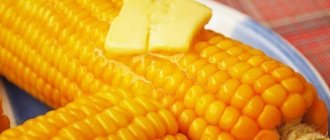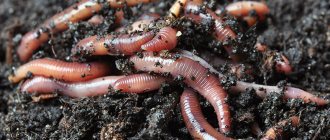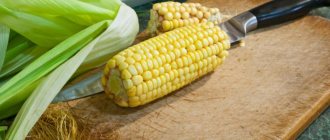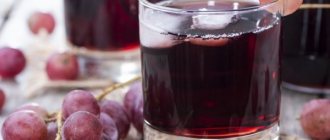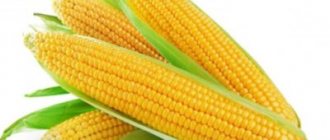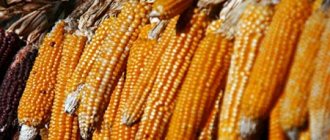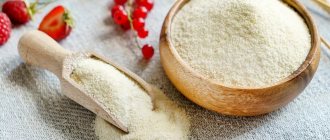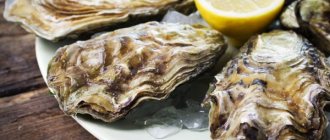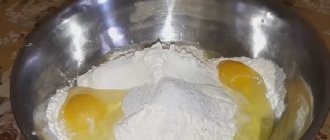How to prepare corn for carp fishing
Experienced fishermen have found and worked out quite a lot of ways to process grain into bait that can attract the attention of fish.
Fortunately, the corn grain itself is easily amenable to any heat treatment, without losing its shape, density, color qualities and taste, and also has excellent abilities to absorb and retain various odors for a long time, which allows you to vary the taste qualities of the bait. Corn for carp is selected from the conditions of the largest coarseness grain, which can be done by separating small fractions of the product on a homemade mesh sieve with a specific cell that sorts the sizes of the future bait.
As mentioned above, canned sweet grain does not require any processing and is used for fishing immediately after opening the package. If the bait requires special qualities and exclusivity of taste, then the fisherman can prepare the bait from dry grain himself, at home, without much difficulty. The main methods of preparation are boiling and fermenting the product, but no less attractive bait is steamed corn for fishing. Moreover, this method is one of the fastest options for preparing grain bait for fishing. The fisherman only needs to soak the dry grains in water at room temperature for a day, and when collecting them for fishing, pour boiling water over the swollen grains, using a regular thermos as a utensil. After four hours, the bait will be ready for use, becoming soft and aromatic, with a natural taste.
The option of using young, so-called milk grain as a bait, also shows itself well. Bringing it to condition requires only a short drying in the fresh air in a place shaded from the sun. The dried bait stays more reliably on the hook, while absolutely not losing its taste and shape. The grains are hulled from unripe, green corn cobs, the suitability of which is determined by the still light yellow color of the hair. The preparation of boiled and fermented nasad requires a more detailed consideration, which we will separate into separate subsections of our article, describing the nuances of process technologies and flavoring methods.
Boiled corn
To prepare the bait, dried, ripe and large rounded grains without right corner shapes are used. The pre-selected material is soaked in warm water.
Important! The readiness of soaked grain is determined by swelling and the release of white foam from small air bubbles on the surface of the water. As a rule, this preparation phase takes from one to three days, which depends on the degree of dryness of the grain fraction
The next cooking step is boiling the corn. After pouring about 5 mm of water over the grains, begin cooking the product over low heat, bringing the composition to a boil. The boiled mass is simmered for no more than an hour, monitoring the hardness of the nozzle
As a rule, this preparation phase takes from one to three days, which depends on the degree of dryness of the grain fraction. The next cooking step is boiling the corn. After pouring about 5 mm of water over the grains, begin cooking the product over low heat, bringing the composition to a boil. The boiled mass is simmered for no more than an hour, monitoring the hardness of the nozzle.
After a couple of seconds, after applying force, the nozzle returns to its original shape, straightening the deformed surface. Next, the cooked corn is flavored by diluting the essence of the attractant or using a ready-made mixture of it. The bait is soaked for half an hour, preventing the grains from absorbing moisture. The flavored bait is decanted and dried in the fresh air.
Preparing fermented corn for fishing
Preparing fermented corn is a longer process, requiring about a week of time to properly implement.
As with cooking, initially a fraction of the selected material is soaked, waiting for the desired condition, only doing this in sweetened water. About two hundred grams of sugar are used per kilogram of product. The swollen grains, saturated with sugar, are filtered and placed in a glass container, filled with warm water in which baker's yeast is diluted. Add ten grams of yeast per liter of water. After filling the contents of the bottle with starter, the bait is infused for three to four days. The bottle is not tightly sealed, allowing gases to escape calmly. The cooking process is determined by stopping fermentation, when the foam noticeably subsides and carbon dioxide ceases to be released. After straining, the nozzle is ready to serve the carp to the table. The smell of the grains is not entirely pleasant to humans, but judging by the practice of use, the fish gives considerable pleasure when eating.
Use as bait
Groundbaits made from corn are also effective. Thanks to its bright color and strong aroma, the grain actively attracts the attention of underwater inhabitants. They are clearly visible at the bottom of the reservoir, and due to their low weight, the grains are easily held on the surface of muddy soil or on algae.
To prepare the bait, you need to take cereal grains, rinse them well and soak them in water for 24 hours.
Then they need to be poured into a pan, filled with water and boiled for 30 minutes. After this, the bait must be cooled and poured into a storage container. When preparing bait, you can use a variety of additives or hemp grains.
It can be used either in bulk and/or in feeders, or by crushing it into a homogeneous paste and mixing with other ingredients.
Cooking options
Corn may differ in cooking methods, and, accordingly, carp react differently to each option.
Varka, parka
Cooking corn cobs. Step-by-step instruction.
Fresh corn cobs can be cooked completely, or separately, with grains.
By pre-soaking the corn for 10 hours, the cooking time is reduced to 30 minutes.
Water to corn ratio:
- 1 to 3 (corn and water, respectively) for old, soft corn;
- 1 to 3.5 for young and tough.
Cooking time:
- 1.5 hours over medium heat if the corn is not pre-soaked.
- 30 minutes if the corn was soaked for 10 hours beforehand.
Do not add oil or salt when cooking! In addition to changes in taste, salt absorbs moisture, causing the natural taste of corn to be lost and the cooking time to be extended.
Parka.
Steaming in a thermos is also possible:
- Fresh corn kernels are placed in a thermos with a water ratio of 1:2;
- Waiting 12-18 hours.
The finished grains are stored in the refrigerator, if possible in sealed conditions, because oxygen starts the oxidation process of the finished corn.
Fermentation – drunken corn (fermented)
Pros of fermented (drunk) corn:
- It emits a specific, attractive smell and has a greater range of action.
- During fermentation, corn loses its ability to saturate carp, which has a good effect on its subsequent activity.
- Versatility. This corn is well suited for bait and as bait (provided that the grains retain their structure and are not too flabby.)
The only downside is that it doesn’t work well with hair accessories.
To properly prepare drunken corn with fermentation you will need:
- Yeast, from 10 grams
- Water
- Corn
- Sugar (optional)
- Containers with a capacity of 3 liters or more
Step-by-step instruction:
- Boiled corn (an hour on high heat is enough) is poured into a container, filling it 1/3 full.
- Water is poured, 1.5 times more than corn. Leave 10-15% of the capacity free.
- Yeast is optionally added (if there is a lack of time) - 10 grams per 1 kg of corn.
- Sugar is optionally added. 2-3 tablespoons of sugar per 1 kg of corn.
- The container closes tightly (!). A medical glove can be used to monitor the process.
- We put it in a dark place. Closet, cellar. Throwing a cloth over it will not be enough.
- Fermentation will begin in 3 days. At this time, as well as in the following days, do not open the container!
- From the beginning of the fermentation process, wait at least 3 days, preferably from 8 to 15 days.
- The smell should be pungent and quite unpleasant for humans.
- The water is drained, but not all. Some water will be needed to prevent drying.
- Store at low temperatures, below 3 degrees Celsius.
The resulting water can be used to hydrolyze bait.
Store-bought canned
An affordable and easy way to obtain finished corn. In principle, you can buy any brand - Bonduelle, Mikheev, Heinz, or an unknown brand, but:
- The nutritional value is indicated on the can; carbohydrates per 100 grams should not exceed 9.9 grams.
- If you take the cheapest corn, it turns out that the huge water content made the corn flabby and too soft, therefore it will take 24-30 hours to dry so that putting the corn on a hook, and especially on a hair rig, goes without incident.
Silicone corn
Silicone imitation corn came to us from China. This type of bait is gaining popularity, but its effectiveness is being questioned. Silicone does not have any natural odor; rather, on the contrary, it has an industrial odor, which does not attract carp at all.
However, such corn still has a plus - buoyancy (pop-up). Rising above the ground, it is easier for carp to find such bait.
They lure fishermen with the price - such silicone corn can be found for 100 rubles, or even less. We recommend not to waste your money, because the benefits from this will be minimal.
How to increase your fish catch?
Over 7 years of active fishing, I have found dozens of ways to improve the bite. Here are the most effective ones:
- Bite activator . This pheromone additive attracts fish most strongly in cold and warm water. Discussion of the bite activator “Hungry Fish”.
- Increased gear sensitivity. Read the appropriate manuals for your specific type of gear.
- Pheromone -based lures .
We recommend reading: If Martini Bianco Has Turned Yellow, Can You Drink It?
Classic. Thousands of carp have already been caught on corn and chickpeas. Before fishing, the grains need to be soaked for 24 hours and then boiled for 20-30 minutes. Flavorings are added to the water before cooking. After cooking, I leave the corn in the broth for another two days. Lightly mucilaged and fermented (but not moldy), fish especially like it.
Carp bait
Another miracle bait that carps love is tiger nuts. Tiger nuts, Chufa in Spanish, are, strictly speaking, not nuts at all, but tubers of ground almonds, which have been cultivated as a cultivated plant in the Mediterranean for thousands of years. No one knows for sure why they are so successful. You will find out what kind of fish and how to catch them with a grasshopper here.
True, they are quite nutritious and completely harmless to carp, unlike, for example, peanuts, but they are so hard that the carp will hardly be able to digest them the first time they are consumed. What happens next with the then separated residues is what I would mildly call “reuse.” Excellent feeding, as you understand...
The fewer nuts, the better. However, be careful, “nuts” are insidious and can play a cruel joke. When rumors of fairy tubers from England first spread to the continent, we were all excited. But the first results were disappointing. I thought the fish should be accustomed to them first.
For several days I threw 2-3 kg of tiger nuts into the windows between the water lilies. And again, not a single bite... Apparently, our carps will not eat this. And yet these nuts did not give me peace. The whole world was catching on them! But nothing worked for me. One compassionate colleague finally sympathized and enlightened me.
It turns out that you had to pour water over the nuts and leave them in it for 24-48 hours, and then cook for 30-45 minutes. Do not add flavoring under any circumstances. In the water, tiger nuts begin to ferment and emit an unpleasant odor, but this is what irresistibly attracts the carp. The most important thing is the amount of bait.
Two or three handfuls is enough! In no case more, rather less! Maybe someone has a different experience, but the more I throw bait, the smaller my catches become. If you think you need to add bait, use corn, hemp and oatmeal. From time to time you hear that in some reservoirs tiger nuts do not attract fish well.
I bet the unfortunate fisherman just fed too many of them. Fish have been caught using tiger nuts for years. Even if the carp has become cautious, active biting will begin again next year at the latest. Only crayfish and bream are not happy with them, but so much the better.
Granules and dough. One of my favorite baits is large fishmeal pellets. They last up to 24 hours on hair equipment if they are pre-soaked for several hours in vegetable oil, which holds the granules together and protects them from being washed out by water. Regular olive oil with a drop of flavoring or attractant is suitable.
Carp bait
It's even better to add fish oil, although it will go rancid after a few days, and then you should throw it away. Rancid oil is also very harmful. It is well known that dough attracts carp no less than boilies. Naturally, not a dough as soft as butter, but a viscous, dense mixture for boilies that will withstand powerful casts on a hair rig. And it may take at least 10 hours for it to dissolve in water.
One day I didn't cook my boilies immediately after rolling them into balls, and two days later I was surprised to notice that they were rock hard. I used them for bait uncooked (the bait on the hook then consisted of one boilie) and, along with excellent carp, I also caught the best tench. The dough is prepared in the same way as for boilies, but is not boiled.
The dough balls can be larger (2 to 3 cm) because they dissolve slowly in water. In addition, only sticky egg whites should be used and the yolk should be discarded. It is very important to get the mixture right. Armin Reich, a great expert in this field, recommends only egg albumin (pure egg white) for gluing. In my experience, wheat gluten is also suitable.
It is not recommended to use very loose or fatty ingredients. The hardest baits are obtained by adding 30% milk powder. The dough should be kneaded thoroughly to form a completely homogeneous mass. Roll the dough into balls, put them on leashes and dry the whole thing for at least 24 hours. Freeze the finished balls after keeping them in vegetable oil, which will reduce the penetration of moisture into them.
We place dough baits in boilie feeders purchased from Solar, which were created, in fact, to protect bait from crayfish. Dough holders made from cut Drennan microfeeders, the smallest curlers, or homemade dough spirals are also acceptable. Such dough has almost completely replaced boilies in my arsenal of baits, and in winter I feed them exclusively.
I have accumulated a lot of experience using all kinds of baits. What helped me outwit many beautiful carp were raisins, clams, Frolic dry kibble cat food, dried cheese cubes and water chestnuts, and, where allowed, crayfish. Maybe you will find your super bait among them.
“Concrete” dough. A good base for boilies are:
- 20% breading flour;
- 20% milk powder;
- 15% egg albumin;
- 5% gluten.
- You can make up the remaining 40% at your discretion from finely ground trout pellets, egg biscuit food for canaries or boilie mixtures. Due to its high fat content, nut flour should be added carefully.
In the summer, you need to keep a close eye on soaked corn. It can ferment on its own, ruining the creation of complementary foods.
How to prepare corn for fishing?
In order to successfully fish with this bait, you need to figure out where to buy it or how to prepare it.
You can buy it in almost any fishing store, in any color and with any aroma. But in order to save money, go to the grocery store. I would like to immediately warn you about some of the disadvantages of the grocery option. The corn kernels in the jar are small, which means you'll be left with an insatiable appetite for the little things. Half of them are cut, as a result the grains will not stick well to the hook, and the fry will easily knock them off.
To avoid unnecessary headaches, I usually cook the corn myself and recommend it to others. Nothing complicated and the money is safe.
And so let's get started. Our corn needs to be washed and soaked in water for 1-3 days. Sometimes corn is soaked with hemp. You need to focus on the swelling of the grains: if they are swollen, then it’s time to start cooking.
You need to cook over moderate heat so as not to scorch the grains for 0.5-1 hour. You also need to add sugar to the pan, 1-2 tbsp. l. for 1 liter of water. As a result, the grain should be soft, but not fall apart.
After cooking, the grains are left to steep in water for another 1-2 days. It is at this moment that our bait can be given a spicy aroma, for example:
- vanilla;
- plum;
- banana.
Naturally, these are not all the aromas that you can add - fishing loves experiments. Many fishermen say that you need to add honey during cooking, but I believe that it should be added exactly when the corn is infused, since honey loses its quality after heat treatment.
Athletes who take part in Carp Fishing competitions use the corn fermentation method. After watching the following video, you will understand that there is nothing complicated in this matter.
Fermentation of corn for fishing
https://youtube.com/watch?v=2cX8qUImr0I%3F
Also, some fishermen believe that slightly sour corn attracts fish much more strongly, so they ferment it for another 2-5 days at room temperature. If you are not interested in this, you can preserve the corn by placing it in the freezer.
The Best Corn Brands That Fish Love
From the listed types of corn used, we can highlight individual brands in whose products fish show increased interest.
"Bonduelle" in a jar
- "Bonduelle"
- "Vernet"
There is an opinion among fishermen that the best grains of these brands are packaged not in tin, but in glass containers.
The leading manufacturers of artificial corn are:
"Enterprise Tackle"
According to the developers, their baits are able to retain their aroma while in water for up to six hours.
Among the companies producing fishing corn, the following can be noted:
- "Sensas"
- "Dynamite Baits";
- Bait Tech;
Despite the wide variety of special fishing corn, there is an opinion among experienced fishermen that there is no big difference in the bite between it and other types of grains.
Preparing fermented corn for carp
Corn is one of the best traditional baits for carp fishing. Canned corn in jars is a favorite among professionals and amateurs. It is often added to bait.
One of the analogues of canned corn is fermented corn. It is usually sold in vacuum bags and has a limited shelf life. Less commonly, fermented corn, or as it is popularly called “drunk” corn, is used as bait.
The light smell of fermentation attracts all cyprinids, but carp like it the most. The main disadvantage of this bait is its short shelf life; about a day after unpacking it turns sour, so it is vacuum packed to prevent oxidation.
It's much cheaper to make your own fermented corn. It's not difficult at all. Consider a recipe for making fermented corn for one fishing trip.
Pour one and a half liters of dry corn kernels into a three-liter saucepan (photo 1), pour boiling water for 5 minutes (photo 2) so that the water slightly covers them (photo 3).
Then put the pan on low heat and bring to a boil. There is no need to cook it. As a result, after 5-10 minutes the corn absorbs almost all the water. We pour hot corn into plastic bottles, about half a bottle at a time (photo 4).
Add a tablespoon of sugar or honey to each bottle (photo 5) and add boiling water to the top level of the grains (photo 6). The corn absorbs some of the water again, begins to swell and bursts the bottle.
After 5-10 minutes, add more water, about 1 cm above the level of the grains (photo 7). If the amount of water does not decrease within 10 minutes, then you can put it on the balcony for 2 days.
After a day, the corn will swell and absorb water (photo 8), add boiling water again a couple of centimeters above the grains (photo 9). Already on the first day you can feel a slight smell of fermentation; visually, when you unscrew the lid, you can see how the mixture foams (photo 10), this means that everything is going right.
After just two days, the corn is ready and you can take it fishing. At this time, it has a slightly alcoholic, sweetish, pleasant smell. The grains swell (photo 11) and are suitable for bait and bait.
You can safely use cooked corn for another two or three days, after which it will do more harm than good. Sour corn has a more pungent and sour smell. This means that fermentation has moved to another stage.
Fermented corn is an integral element of carp fisher bait mixtures; don’t be lazy to use it, and the carp will delight you with bites. Successful fermentation experiments, NHNP.
https://ranoutrom.com/sposoby-lovli/karp/fermentirovannaya-kukuruza.htmlhttps://fishx.org/kak-prigotovit-odnu-iz-luchshikh-nasadok-dlya-karpa/https://fishermap.org/ vegetal-baits/pyanaya-kukuruza/https://orybalke.com/nazhivki/prikormka/fermentirovannaya-kukuruza.htmlhttps://samodelki.org/prigotovlenie-fermentirovannoj-kukuruzy-dlya-rybalki/
Pros and cons of using corn grains for fishing
Bait such as corn is very popular among fishing enthusiasts. However, this attachment has both its advantages and some disadvantages. The advantages include the following:
- Availability.
- Low price.
- Easy to prepare.
- Possibility of combined use with various additives and flavorings.
- Can be used as bait or bait.
- It has a good level of catchability and stays on the hook for a long time.
The disadvantage of grains is that if they are used excessively, the fish begins to quickly become saturated and becomes less active. In addition, in addition to cyprinids, it attracts smaller fish such as roach or rudd.
How to prepare corn for carp fishing
A fisherman can prepare the following corn on his own:
- Fermented.
- Boiled.
Fermentation
Fermented corn is made for bait or complementary food for carp fishing. This is a fairly effective product, the yellow color and aroma of which are very attractive even to such timid fish as carp.
To ferment corn for carp fishing you will need:
- Corn (3-4 kg).
- Water.
- Plastic containers with a lid that closes well.
- Boil the corn for forty minutes, then add a small amount of sugar.
- Pour the corn into buckets so that it fills them no more than one-third.
- Fill the corn with water so that its level is 15 cm above the grains. This is necessary so that the corn can absorb enough water and swell.
- Close the bucket with a tight lid and leave it to soak in a dark place.
- After the first three days, the corn will begin to ferment, foam and produce bubbles. In this case, you cannot open the buckets, since the process is not yet completed.
- After another five to six days, you can open the buckets. The smell of corn should be slightly alcoholic. In general, you can ferment corn for several months, this will not spoil it, but on the contrary, it will acquire an even more aroma that attracts carp.
- After this, you can use fermented corn, but you still need to store it in a closed bucket so that the smell does not dissipate again.
Cooking
Most fishermen prefer to use boiled corn rather than store-bought corn. The reasons for this are:
- Feeding corn may require about 6-8 kg, so using boiled corn is much cheaper than store-bought corn.
- Some fishermen are unhappy with the quality of store-bought corn because it is often overcooked, small, or squashed.
- Home-boiled corn can be sorted and large ones selected, which are most suitable.
- When brewing yourself, the fisherman can completely control the entire cooking process, and at the same time can also add various flavors at his discretion.
A step-by-step guide for making your own corn looks like this:
Pre-soak the corn in water for three days.
After this, pour the corn into a saucepan and add water with a small amount of honey or sugar (3-4 tablespoons), cook for 40 to 60 minutes. Cooking time depends on the type of corn and its “age”. The older the corn, the longer it takes to cook.
It is important to know that the grains should not be overcooked, so during the cooking process it is necessary to check from time to time whether the future nozzle has already been cooked.
After the grains are cooked, they must be left to steep in the same water for 2-2.5 hours. You can also add a flavoring with the smell of sweets or corn itself, which will additionally attract carp.
What is fermentation
The process involves the fermentation of sugar and yeast in which the corn is soaked. The grains acquire a peculiar sour smell that can attract fish.
For people who have not experienced preparing fermented corn, the cooking process may seem complicated. But this is not so, you just need to season the corn with the right ingredients and create the right conditions for fermentation. The nozzle can be purchased in stores, but it is recommended to prepare it yourself.
Why fermentation at home is good
Fishermen often have a question: prepare the bait yourself or buy it in a store? Of course, if you don’t have time and don’t want to bother, you can buy it in a store and have a great time catching it. But the quality of the bait and the manufacturing conditions remain a mystery. Therefore, for your peace of mind and better quality of the nozzle, it is recommended to prepare it at home. After all, the process is under its own control: the amount of ingredients mixed, the holding time, etc. Plus, you can sort corn with various defects. And the most important advantage of preparing bait at home is savings.
Read Catching channel catfish
Read: Popular plant baits. Cooking recipes
Gear selection
First choose your fishing method. And then move on to choosing fishing gear. Most fishermen use a float rod. This method is used for catching medium and small carp due to limited gear, especially when fishing with a fly rod, when there is no reel at all and the friction brake will not save you.
They can also fish with carp gear and a feeder (links to our guides).
Float tackle consists of several components:
Float
Characteristics:
- up to 2 grams;
- elongated shape;
- possibility of attaching a firefly;
- the top part should be short but bright.
Sinkers
Ordinary lead pellets from the float set for 20-50 rubles are what we need. Before fishing, you will need to properly load your float with these pellets. How to do it correctly - read our article for beginner floaters.
Make it a rule, on every fishing trip, the first thing you do is...
Hook
Carp is a very strong fish. Your choice is carp hook No. 6 made in Japan. Owner is the most popular, but Rapala or Kosadaka will also work.
fishing line
When fishing with a float, use a monofilament line 0.25 mm thick. The same goes for the feeder. The leader is fluorocarbon 0.3 mm thick.
Coil
When fishing with a fly rod and catching small carp, a reel is not needed at all, since it is not included in the gear.
The Bolognese float fishing rod has a small inertial reel and drum, but with such tackle, you will not be able to pull out a large carp due to the lack of a friction clutch.
A Bolognese or match fishing rod with a spinning reel is the option with which you can catch large carp
Before fishing, it is important to correctly set the friction brake so that it releases the line only if there is strong resistance at the tip of the rod
Read more about choosing a reel for a float fishing rod.
Editor's choice: Mikado ACE MATCH 4006 FD reel – price RUB 3,200.
Rod
Flying rod – 4-5 meters. More is not necessary, it will be too heavy and difficult to maneuver.
Bolognese fishing rod – 4-5 meters
Choose models with a strong mount for the reels and well-attached rings without burrs, this is important
What is better for carp - peas or corn?
Peas, along with corn bait, perform remarkably well when hunting carp. It contains many nutrients and has a strong odor that spreads over long distances. It is used whole and boiled. Sometimes they prepare porridge with the addition of various cereals. The fish must first get used to peas in order to determine whether it is edible or not.
Corn is one of the most popular baits for fishing. Its affordable price and high efficiency helps to catch a rich catch of the Karpov family. It is suitable for both float gear and various donks. All kinds of bait recipes allow every fisherman to create his own masterpiece of bait, which will bring real pleasure while fishing.
Sweet corn
Sweet corn refers to ready-made canned corn in cans. The label contains the inscription “sweet”, distinguishing this variety from other types. The advantage of this bait is that it is already ready and does not require additional processing before fishing. The jar is opened, then the grains are simply placed on the tackle. To secure canned sweet corn to a hook, a hair rig is commonly used. Some fishermen add additional flavorings to the finished corn. You can make your own sweet corn:
- Soak regular corn kernels in water. Soaking time is from one to three days. As soon as the grains swell, you can proceed to the next stage.
- Cook the swollen grains for thirty minutes to an hour. During cooking, add honey or sugar.
- After cooking, add vanilla as a flavoring.
- Infuse the corn for 24 hours. During this time, lactic acid will be released, because of which the grains will have a not entirely pleasant smell, but this is what attracts fish.
Preparing to Ferment Corn
Corn fermentation depends on the quality of the raw material. The entire cooking process begins with the preparatory stage. The grains must be thoroughly washed to get rid of dust and dirt, pebbles and other inedible impurities. After this, you need to fill them with water and leave them for a day, maybe a little longer. This is necessary for the grains to swell and become saturated with water.
In the summer, you need to keep a close eye on soaked corn. It can ferment on its own, ruining the creation of complementary foods.
Then it all depends on the quality of the raw materials:
- dry and shriveled grains require longer cooking to soften;
- fresher grains, additionally soaked in water, will cook quickly.
The corn must be filled with water, taking into account that some of it will be absorbed and evaporated. After this, the product is simmered over low heat for forty minutes to an hour so that the future bait becomes soft. For complementary feeding, grains that have boiled to such an extent that they burst are better suited. It is more convenient to place whole grains on the hook.
Attaching bait to a hook
Baiting corn grains is a responsible process on which the overall success of fishing depends. It is allowed to plant from 1 to several corn, depending on weather conditions, the depth of the reservoir, and the quality of the bite.
To catch carp, it is advisable to use a large hook, on which 8-10 corn are attached. When fishing for bream, it is recommended to combine corn and worms (maggots). If fishing takes place on a muddy bottom, you need to take artificial corn.
Variety of corn grain fixing:
- Plant 1 grain. Small or medium sized hooks (numbers 16 to 20) are suitable. You can insert it by making a puncture across or through the side to the middle. You can also pierce the edges of the grain. The specific method is selected depending on the size and hardness of the grain.
- Features of the attachment of several corns. You need to plant it not in the center, but on top of the grain.
To build a bait from maggots and corn, you need to put 2-3 larvae on the hook, then 1 grain, then 1 or 2 more larvae. When creating a “sandwich” from corn and a worm, you need to put 1-2 large earthworms on the hook, and 1-2 grains on top. If the worm moves in the water, the chances of attracting fish will increase.
There are several ways to prepare corn for fishing. This is the preparation of sweet bait, steaming or fermentation. Also, to improve the bite, experienced fishermen advise adding flavorings, and when attaching bait, making “sandwiches” from corn and a worm.
If you find an error, please select a piece of text and press Ctrl+Enter.
Types of corn baits
All grains suitable for catching carp with corn can be divided into several categories:
- sweet food;
- steamed;
- fermented boiled;
- artificial;
- branded;
- fresh corn of milky ripeness.
The term “candy food” refers to grains sold in grocery stores. The most popular brand is the well-known Bonduelle. Fishing with this type of corn is very popular because it is ready to hook, but is cheaper than branded baits.
Steamed and fermented baits are prepared with your own hands; they will be discussed in the next section.
Artificial corn is produced by fishing companies in the form of soft imitations of real grains. They are rich in a variety of aromas and attract fish well. Such artificial baits help when fishing on muddy bottoms, working as a floating boilie. In addition to natural grains, they can be attached to a hook or mounted on a hair rig.
Branded boiled is a ready-made product for catching carp with corn, produced by well-known and not so well-known companies that produce fishing lures. “Sensas”, “Traper”, “Sabaneev” - this is an incomplete list of manufacturers of such attachments.
It is a pity that such bait is used only during the short period of ripening of this cereal crop.
Bait recipes
If we talk about the ancestor of carp fish, then the number of recipes suitable for catching it increases noticeably. He loves sweets, and he doesn’t really care what exactly the sweetness gives. It turns out that we can add sugar, honey, fruits and berries, and even candy. Corn seeds will perfectly absorb our flavoring sweeteners and make excellent bait for the "underwater pig".
Soaking and cooking
The recipe is simple, and both dried and fresh seeds are suitable for us. Let's get started:
- Take a container and start soaking the cereal. The process will take 2-3 days, but it is still recommended to keep an eye on it, because the time depends on the variety and harvest.
- They will swell. That's it, cook it in the same water for 30-50 minutes. While cooking, stir, add sugar, cinnamon, vanillin and honey.
- Remove from heat, continue stirring, let cool and brew. The nozzles are ready.
Be sure to check with a hook or a needle: is the corn sitting securely and is it not falling apart?
Often fish try to knock baits off hooks with their nose or fins. This is also why they must sit securely.
Steaming in a thermos
More complicated, but more effective. Recipe:
- Soak the grains in warm water. We change it every 2-3 hours, and so on all day. There is no need to change the water at night.
- Now you can steam it. Fill a third of the thermos with soaked grains and pour boiling water over it.
- Add sugar or add another sweetness (fruit, some add chocolate).
- After two hours the nozzles are ready.
Fishing with corn
Fermentation
Fermentation is a process in which fermentation plays a major role. The grains turn out to be sour; this is perhaps the only exception where carp prefers a sour taste. The smell is bright and rich if everything is prepared correctly.
It should ferment only in glass or clay containers! In plastic or metal (without enamel) containers, a chemical reaction will begin. IMPORTANT! But the main advantage of fermented corn is its rapid digestibility in the carp’s stomach! That is, he likes to eat it, but he still cannot become full. These grains can be used to make wonderful bait! We will describe the most common recipe
Fermenting:
We will describe the most common recipe. Fermenting:
- Take a container and soak the grains for a day.
- We take out the corn and rinse it under running water.
- Now we need to cook it. For every liter of water in the pan, take 1 tablespoon of beet sugar.
- We put it on fire. Cook for about 40-60 minutes, do not forget to stir.
- Ready. Now the water needs to be drained. The contents of the pan will cool down. Now we transfer the corn into a jar. There we pour new water (not from the tap), add aromas and add 10 grams of baker's yeast or a glass of kefir - as long as conditions are created for bacteria.
- Stir, pour a little sunflower or olive oil. Its layer will not allow air to pass through, and you cannot close the jar - it is necessary for fermentation gases to escape. Oil is a kind of valve.
- That's it, we leave our jar in a warm place for 4-5 days - let it ferment and become sour.
You need to drain the water while fishing or take the grains without draining. If you salt it now, a lot of the smell will be lost. We store the stock in the same jar, but in the refrigerator so that our dish does not ferment. Fermented corn for fishing is also found in stores. It is packaged in jars, buckets and large buckets. It can be used as complementary food or placed on a hook; it can even be pushed tightly into a feeder feeder.
Canned strawberries and vanilla
Carps literally flock to this dish. Added to the sweet corn flavor are strawberries and vanilla (diffusing enhancer)! It’s easy to do; all you need is a small glass jar with a lid. Cooking:
- Open an iron can of canned grains. Be sure to taste it! It shouldn’t be bitter, it shouldn’t be too sour. Not enough sweetness - add a teaspoon of sugar.
- Transfer to a glass container along with the juice! We put strawberries crushed with our fingers there; 3-5 medium-sized berries are enough for us.
- Sprinkle in a little vanilla, mix everything thoroughly and put in the refrigerator for 2-3 days.
The nozzles will turn out tasty and aromatic. Why is there carp - a person will appreciate such a dessert! We take a jar with us, and not the corn caught from it - there should be juice throughout the entire fishing. It is better to store in the refrigerator, otherwise it will ferment.
Store-bought fishing baits made from corn can be found in different colors. There are red ones, and there are grains colored green. The fish are used to yellow, it’s better to take the “classics”.
